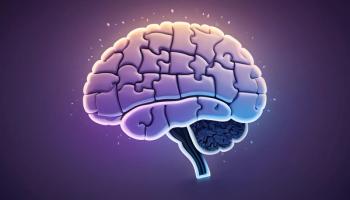
Bipolar Disorder: Diagnostic Challenges and Treatment Strategies
The past few years have seen substantial progress in recognizing and treating several of the subtypes of bipolar disorder. This Special Report addresses the diagnostic challenges and the different strategies for managing these subtypes.
August 2006, Vol. XXIII, No. 9
The past few years have seen substantial progress in recognizing and treating several of the subtypes of bipolar disorder. This Special Report section of Psychiatric Times addresses the diagnostic challenges and the different strategies for managing these subtypes.
In her article, Developmental Neurobiology of Bipolar Disorder and Substance Use Disorder, Deborah Simkin takes on an intriguing concept. This is an important topic because it questions whether these are truly comorbid disorders, are copathologic disorders, or are co-occurring disorders that may have an intrinsic deleterious effect on the developing brain. The maturational processes of brain development via neuronal pruning and hormonal effects are reviewed, and their potential impact on bipolar disorder is discussed. The potential long-term effects of perturbations of catecholamines in the developing brain, whether from substance use or intrinsic bipolar disorder, may have profound effects on the lifelong course of illness. This is an intriguing topic about which we eagerly await more research and data.
The article, Bipolar II Disorder: Current Issues in Diagnosis and Management, by Franco Benazzi, focuses on diagnostic criteria for hypomania, diagnosis of mixed depression, and management of mixed depression. It begins by reviewing the current DSM-IV criteria for bipolar II disorder. Recent studies that point to a substantially higher prevalence of bipolar II disorder than is described in DSM-IV are summarized. This difference is attributed to better methodologies and more sensitivity in elucidating histories of hypomanic episodes in patients who seek treatment primarily during depressive episodes. The author argues that many episodes of depression are mixed depressions that do not meet the criteria of hypomania established by DSM-IV. Treatment strategies include the prioritization of depressive versus hypomanic symptoms, the judicious and selective use of antidepressants, and the use of mood stabilizers.
Ihsan Salloum takes on a doubly complex issue in the article The Clinical Challenge of Comorbid Bipolar Disorder and Substance Use Disorder. As if bipolar disorder were not challenging enough, the management of this comorbidity is especially difficult. For many years, this combination of disorders was not studied because substance use was one of the exclusion criteria for research studies of bipolar disorder. However, the high rate of co-occurrence of these 2 disorders makes it essential that a solid knowledge base be developed to guide clinicians in treatment decisions. Unfortunately, treatment approaches in these patients are not well studied. A few investigations show some benefit of medicines for bipolar disorder in decreasing the rate of heavy alcohol drinking or the time to relapse to heavy drinking, but the effect of medicines in the non–heavy drinking bipolar population, which includes many patients, remains to be demonstrated. Treatment approaches need to be both pharmacologic and psychological to maximize the potential for success.
The article Rapid Cycling in Bipolar Disorder: Diagnostic Issues and Treatment Options, by Mario Maj, addresses another challenging aspect of this complex disorder. Traditional DSM-IV criteria may fail to identify a substantial number of patients who would not be included in research protocols, but who are nonetheless ill and seeking treatment. The author makes the important distinction between the reliability of criteria versus the sensitivity of criteria to adequately identify patients. The history of the rapid-cycling subtype is reviewed, with an interesting historical note about an often overlooked yet important report about the benefits of lithium in these patients. The many difficulties of treating these patients, as well as the author's approach, are presented.
In the article Progress in the Treatment of Bipolar Depression: Advances and Challenges, David Kemp and colleagues focus on the pharmacologic management of the depressive phase of bipolar disorder, describing the evidence base for controlled studies, emerging treatments, and expert recommendations. The unmet need for researchinformed strategies for acute and maintenance treatment of depression is described. Data regarding the efficacy and safety of lamotrigine are reviewed and critiqued. The emerging data about the atypical antipsychotics quetiapine, olanzapine, and the olanzapine-fluoxetine combination in bipolar depression are also presented. Responder rates reporting the percentage of patients who have a 50% or greater decrease in symptoms are described. The critical issue of preventing recurrence of depression is discussed, and sideeffect burdens are described to balance the efficacy data. Lastly, the authors offer their own invaluable experience; they describe what has worked best for them and suggest treatment approaches for the different clinical scenarios.
This Special Report section on bipolar disorder provides new and exciting data as well as clinical guidance regarding many of the troublesome issues of this complex illness. The contributing authors have added significantly to our knowledge while probing several provocative issues. It is an enjoyable, informative, and thought-provoking effort.
Special Report: Bipolar Disorder
Deborah R. Simkin, MD
Franco Benazzi, MD, PhD
Ihsan Salloum, MD, MPH
Mario Maj, MD, PhD
David E. Kemp, MD, Keming Gao, MD, David J. Muzina, MD, and Joseph R. Calabrese, MD
Dr Casey is professor of psychiatry and neurology in the department of psychiatry and neurology at the Oregon Health and Science University in Portland, Oregon. His current research interests span clinical and preclinical studies in biologic psychiatry, with emphasis on schizophrenia and other psychoses, tardive dyskinesia, other movement disorders, and the metabolic disorders associated with psychotropic drugs.
Newsletter
Receive trusted psychiatric news, expert analysis, and clinical insights — subscribe today to support your practice and your patients.
















